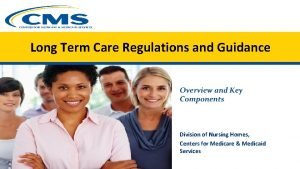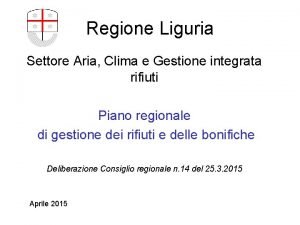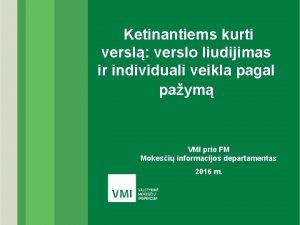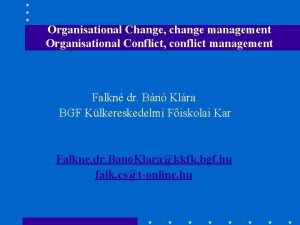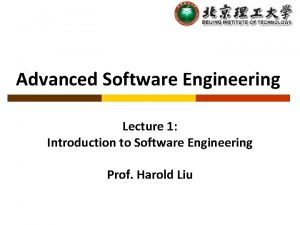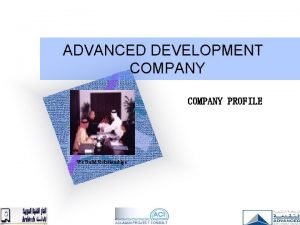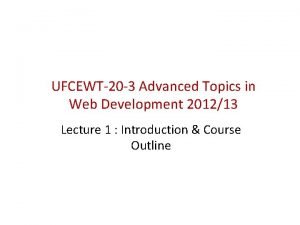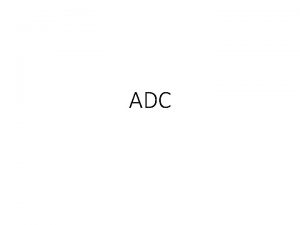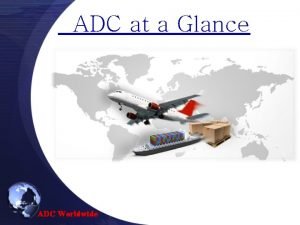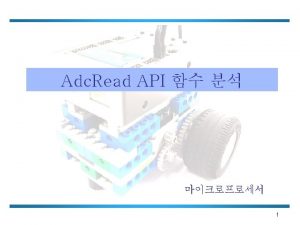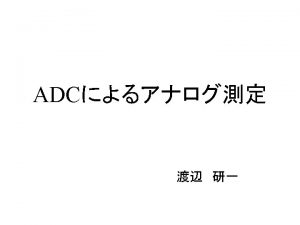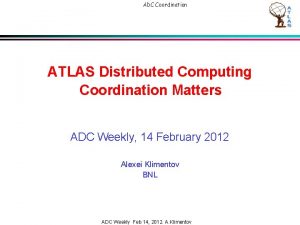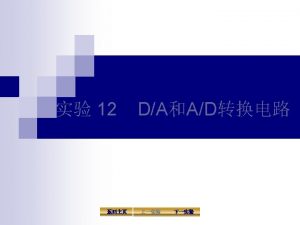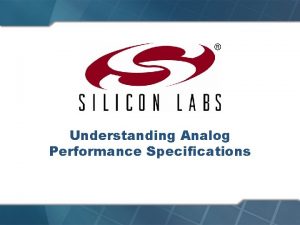ADVANCED ORGANISATIONAL DEVELOPMENT CHANGE ADC 812 S ORGANISATIONAL









- Slides: 9

ADVANCED ORGANISATIONAL DEVELOPMENT & CHANGE (ADC 812 S)

ORGANISATIONAL DEVELOPMENT DEFINED A system-wide application and transfer of behavioral science knowledge to the PLANNED development, improvement, and reinforcement of the strategies, structures, and processes that lead to organisational effectiveness

CHANGE in the strategies, structure, and/or processes of entire system (organisation) - A change programme aimed oat modifying strategy - Change in grouping of people to perform tasks (structure) - Change in methods of communication and solving problems (process) to support changes in the strategy Application & transfer of behavioral science knowledge/practice/skills - Focus more on leadership, group dynamics and work design as well as strategy, org design, culture change - Does not focus on economic, technical and financial aspects of the organisation Concerned with managing planned change - Adaptive process of planning and implementing change - Plan to diagnose and solve organisational problems - Plans are flexible and often revised as new information is gathered Design, implementation and reinforcement of change Oriented to improving organisational effectiveness - Maintenance of new skills or behaviours (after T&D) - Sustain change over a time - Able to solve its problems and improve itself continually - Leads to high financial & technical performance - Engaged, satisfied and learning work force - Satisfied and loyal customers


LEWIN’S CHANGE MODEL Unfreezing - Reduce restraining forces – keep org at current level - Get data (shows discrepancies between desired and currently exhibited behaviour) - Motivate member to engage in change activities Moving - Shift behaviour of org to a new level - Interventions to develop new behaviours, values and attitudes by changing organisational structures and processes Refreezing - Stabilize new state of equilibrium - Use supporting mechanisms to reinforce new org state

ACTION RESEARCH MODEL Problem Identification - Someone with power and influence sense org has a problem to be solved with the help of OD Practitioner Consultation with expert - Initial contact stage OD Practitioner and client assess each other Data gathering & preliminary diagnosis - OD Practitioner with employees Collect and analyse data Methods: Interviews, process observation, questionnaires and organisational performance data Feedback to key client or group - Feedback for member to determine strengths/ weaknesses All relevant and useful data to client – summarized data Joint diagnosis - All members discuss feedback Decide whether they want to work on identified problems Joint action planning - Jointly agree on further action Begin to move organisation Specific actions depends on culture, technology, environment, diagnosis, time and expenses Action - Actual change from one state to another Data gathering after action - Measure /determine the effects of action Feed results back to the organisation

POSITIVE MODEL - Concentrates on what the organisation does THE BEST/DOING RIGHT - Help members to understand their org when it is working at its best - Builds off those capabilities to achieve even better results Initiate Inquiry - Determine subject of change Emphasise members involvement to identify the issue (work teams) Inquire into best practices - Identify “what is best” in the organisation Example: organisational innovation Collect stories on new ideas that were developed and implemented Members interview each other and tell stories of innovation Discover themes - Examine stories and identify themes common to peoples experiences Example: Managers give freedom to people to come up with new ideas How exposure to customers sparked creative thinking Themes form basis for moving from “what is” to “what would be” Envision a preferred future - Examine identified themes Members visualise org’s future and develop “possible propositions” Truly exciting, provocative themes and possible picture of the future Design and deliver ways to create the future - Describe activities and creates the plans needed to bring about vision Action and assessment of phases Members make changes, assess results, make adjustments and move org toward vision and sustain “what will be”

DIFFERENT TYPES OF PLANNED CHANGE • Magnitude of change - Incremental (fine-tuning) – exist in existing business strategy, structure or culture – aimed at improving status-quo - Altering how it operates (large) – includes several dimensions, multiple levels • Degree to which system is organised - Some orgs to rigid and overly defined policies, procedures, structures for task performance - Policies poorly defined, job responsibilities are ambiguous, relationships complex • Whether setting is domestics or international - Where is the change programme planned? - Underlying values and assumptions in various cultures

FOR THE LIBRARY ON WEDNESDAY • Compare the change models and discuss which model would be more appropriate for your organisation and why? • Analyse the general model of planned change, and discuss various basic activities that practitioners and organisations members can jointly carry out • Discuss critiques on planned change
